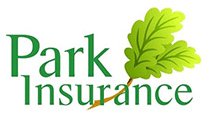It’s your children’s birthday, and you’ve decided to throw caution to the wind and organise a birthday party. It can’t be hard, can it? But planning a kid’s party isn’t like it was years ago when all you needed was a cake from the local supermarket, plenty of jelly and ice cream, and a few balloons. These days, kid’s party planning is almost a military operation that needs weeks of preparation and careful consideration.
In this guide, we’re going to take you through the stages of planning a children’s party so that it’s less stressful for you and more fun for the kids. We’ll look at budgeting and choosing a venue, how to put together a guest list, and even those things you might not have thought about, like insurance cover. We’ll answer your questions and give you a few ideas on how to plan a successful kid’s party.
Grab a pen and notebook, settle down with a coffee, and let’s get started with our how to plan a children’s party guide.

Before the party
Our first top tip: Get the planning done early! The worst thing you can do if you’re planning a kid’s party is to leave everything to the last minute. Get started well in advance, and you won’t have issues with pre-ordering cakes, booking venues or entertainers, or having a ‘backup plan’ if the weather interrupts the festivities.
Pre-Planning
Before you even think about sending out the invitations, your first 10-point checklist should include the following:
- Set a budget – planning a children’s party isn’t a cheap event. From printing invitations to booking a venue, you’ll need to allocate your budget carefully. We’ll go into more depth on budget planning in a moment.
- Pick a theme – this is your chance to involve your child in the process. Sit down with them and discuss what theme you’d like to go with.
- Home or away – decide if you want to have the party at home or if you want to book a venue
- Date and time – this is relatively easy, but remember that if the child’s birthday falls on a weekday, you may need to plan the party for the previous or following weekend.
- Who’s coming – this is always a contentious issue, but again, you can work with your child to make sure you invite the children your kid wants at their party.
- Food matters – classic jelly and ice cream or halloumi and vegan burgers? Remember to cater to the age group and consider any allergies or dietary requirements, especially if a guest has a severe nut allergy, for example, or is diabetic.
- Tackling issues – this could include everything from finding out what kind of insurance you need to where parents are going to park to drop off and pick up their children, as well as letting your neighbours know if you’re holding the party at home.
- Initial contact with suppliers – find out how long they’ll need to book essentials such as cakes, entertainment, venues, and items such as bouncy castles or trampolines.
- Split the cost – if your kids are up for it, find out if any parents are also planning a party around the same time, and see if you can organise a joint event.
- Don’t forget about the parents – ensure there is food and drink for the mums and dads.
- An additional note: Draw up a plan – include dates when things like cakes, entertainment and venues have to be booked, invitations printed and sent out, RSVP cut-off dates, etc.

How to plan a children’s party within a budget
The first thing you’ll need to think about is your budget. It’s all too easy to let this vital factor run away from you. After all, you want your kid’s party to be the best and most fun it can possibly be. Today, expectations are high, so you will need to spend a bit more to make it a really special occasion.
Budget costs you’ll need to think about include:
- Venue costs – you can minimise this by planning a children’s party at home rather than at a different venue. A venue may offer reductions or discounts for group bookings over a certain number, so negotiate and see what you can get for your price range.
- Food costs – again, you can cut these down by catering yourself, but you will still need to factor in how much per head you’re willing to spend. And remember to add the cake to this category.
- Entertainment – Not only will you need to set aside a budget for entertainment, but you’ll also need to book early, especially around the most popular times such as school holidays, Christmas and Easter.
- Decorations – Don’t forget to factor the cost of decorations in. A single bag of balloons and some bunting isn’t going to cut it, and themed decorations can also be considerably more expensive than generic ones. If you’re planning a children’s party with a theme like Harry Potter or Disney Princesses, pick and choose your decorations so that you have themed ones that accent against more generic and cost-effective ones.
- Extras – there are going to be a thousand and one costs that you didn’t think of at the time, so make sure you put aside a ‘pot’ for extras such as goody bags, printing invitations, photos of the day, and even personal liability insurance, especially if you have activities such as a bouncy castle, a visit to a theme park planned, or even trampolines in the garden.

Picking the venue
The easiest way to cut your venue costs to almost nothing is to plan a children’s party at home. However, bear in mind that your house insurance may not cover any damage caused during the party, which could leave you out of pocket if a cup of blackcurrant squash ends up all over your brand-new carpet.
You’ll have to clear things with your neighbours, too and think about issues such as parking, safe access, and how any pets might react to having a lot of young and excited children in the house.
If you decide to go with an external venue, contact them well in advance to get a booking that coincides with your planned date.
Check that they have full insurance to cater for a children’s party, including equipment cover, public liability insurance, and cancellation insurance. Find out whether you need to arrange any additional personal insurance yourself as the party organiser.
Our Top Tip for venues – Have a ‘Plan B’! If your first venue falls through at the last minute, you’ll need a plan B to avoid cancelling the party altogether.
Decide on the theme
Often, deciding on the theme for your party will go hand-in-hand with choosing a venue. This is also a chance for you to sit down with your child and ask them what they would like the theme to be (within reason!). This could be anything from Pirates to Space, fantasy characters or an adventure party. Remember, no matter how much planning and preparation you put into the party, at the end of the day, it’s the child’s special day. Make sure they feel involved and included in the process.
The theme will also significantly influence everything from the decorations you choose to the type of food you serve, the invitations, and the entertainment (a magician for a Harry Potter party is a must, for example).
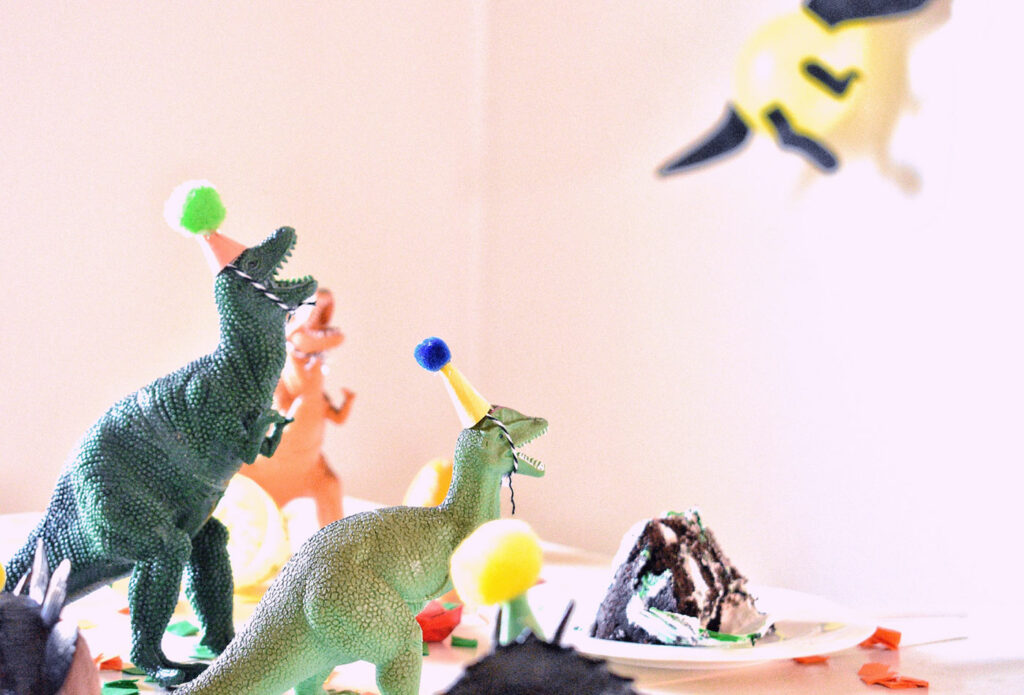
Planning activities
After all that delicious food, your partygoers will need some activities to keep them happy and perhaps burn off some energy too. Planning a children’s party involves factoring in activities that are both age-appropriate and enjoyable, as well as safe. For younger children, a scavenger hunt in the garden with lots of clues and prizes is a budget-friendly activity that’s easy to organise in advance.
You could also hire some equipment such as a bouncy castle, some trampolines or even a karaoke machine (that’s one thing you’ll definitely have to warn the neighbours about beforehand!). If you are hiring equipment, check with the supplier that they carry full public liability insurance. It may be worth talking to your broker to find out if it’s necessary to get some personal liability cover too. This will protect you from the financial impact of any potential legal claims for injury or damage to property.
Food and Drink – DIY or catered?
Active kids get hungry, so a big part of planning a children’s party is to make sure there’s plenty of food and drink on offer to keep them happy. The easiest way to keep to a budget is to do the food and drink yourself. But before you go out and buy everything you need for a feast fit for a prince or princess, check with your invitees to make sure you’re aware of any special dietary requirements or allergies.
The most serious of these can be nut allergies, so if any children suffer from this potentially life-threatening condition, you may need to completely rethink your menu and double-check that there are no nuts in any of the ingredients. Personal liability insurance can also protect you if a child falls ill at your party because of an allergy to food you’ve made or served.
Booking external caterers takes the hassle out of planning a kid’s party. Not only do they bring the food with them, but there’s a lot less clearing up afterwards. However, external catering will eat into your budget, and you will need to book them well in advance.
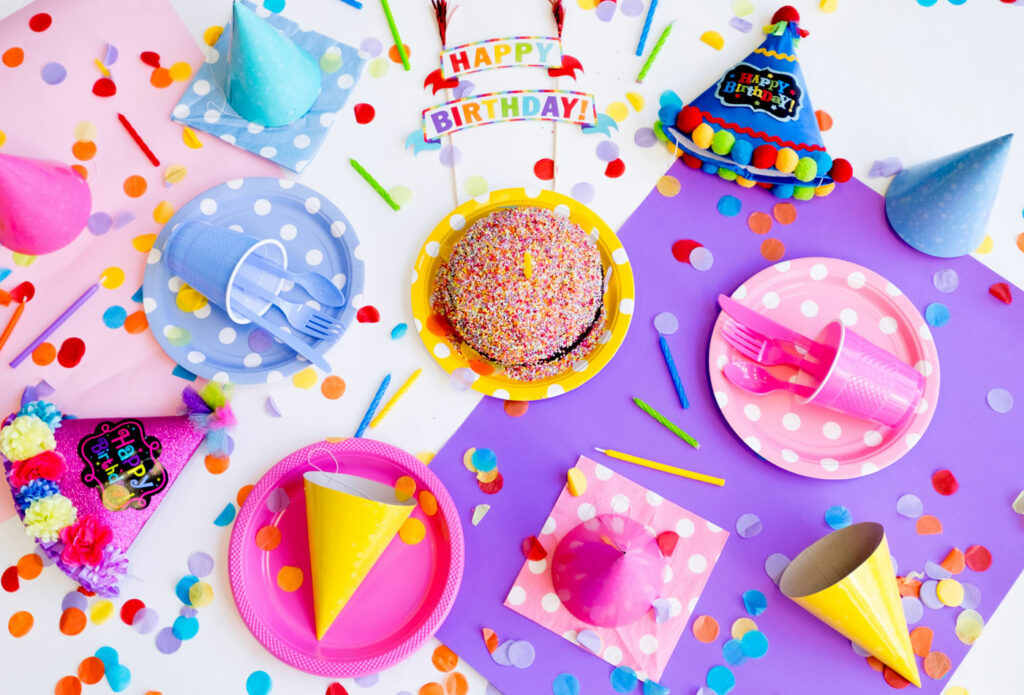
The cake
At the centre of every birthday party is the cake. As it’s the star of the show (apart from the birthday child themselves), it needs to be special. If you’re having a themed party, don’t forget to tie the cake’s design to the overall concept. For example, a Harry Potter party could have the Sorting Hat as the cake! Make sure it’s big enough for everyone to enjoy – there’s nothing worse than having a birthday cake that’s too small and leaves some of your guests without a slice.
Our Top Tip for the cake – If you’re ordering a cake specially for the event, don’t leave it until the last minute! Your cake artist will need as much time as possible to make that perfect birthday cake for you, especially if it’s a special commission or bespoke cake. Order at least two weeks in advance, longer if your baker is busy, or it’s the ‘party season’.
Who’s coming?
This is where things can get tricky. Young children start to form bonds and friendships by the time they are around three or four years old. It’s worth talking to the nursery to find out who your child’s friends are so that you can organise the guest list accordingly.
For children between the ages of around seven to 10, the diplomatic thing to do is to invite the child’s class to ensure nobody feels left out. You don’t have to do this if you’re on a tight budget. But you could keep costs down by arranging a simpler party, such as a picnic in the park.
Once your children are a little older, they have formed their own groups, which makes invitation lists much easier to manage, and often shorter than for a younger child’s party.
Talk discretely to your child about avoiding mentioning the party in front of classmates who may not have made the list to avoid conflict and hurt feelings. This is a great chance to help them develop a valuable life skill, as it will teach them about considering the feelings and emotions of those around them.
Time to send out the invitations
The cheapest way to produce invitations is to go online and download one of the many free templates available to create your own. Make sure you send those invites out at least three weeks beforehand, with an RSVP confirmation date of a week before the party. This will give you time to adjust how much food is ordered or cooked, for example.
Our Top Tip for invites – Utilise modern technology and set up a WhatsApp group so that everyone involved can stay up to date with details about the party. Make sure everyone knows how to send their confirmations or apologies and choose a single route via the WhatsApp group, text, or email.
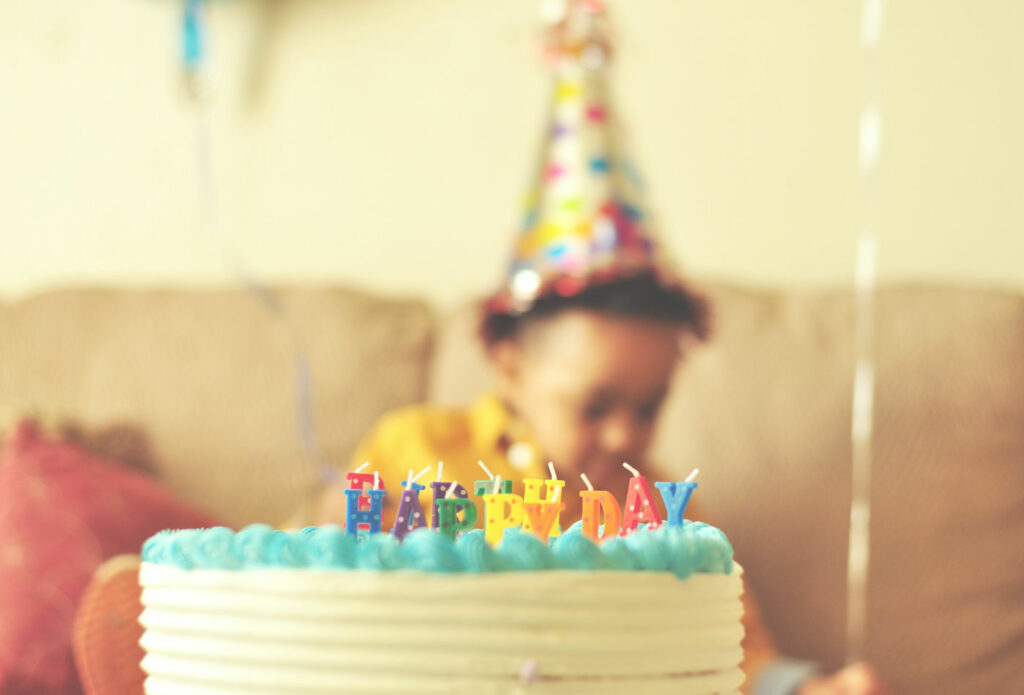
Planning a party timeline
If you break planning a children’s party down into easily managed chunks, it means that you’ll have a much less stressful time. Leave everything to the last minute; it can only take one thing to derail the entire party and ruin it for everyone. Here’s our planning a kid’s party timeline:
6 – 8 weeks before the party: It’s time to start the ball rolling
- Sit down with your child and discuss a theme
- Set a provisional date
- Set your budget
- If you’re having the party somewhere else, book the venue and pay your deposit to secure it
- If you have entertainment, outside caterers, or activities, book them now and pay deposits
- Start getting invitations and decoration materials together
- Check out your insurance – talk to your broker about short-term insurance cover for the day
- Make a provisional ‘Plan B’ just in case!
3 – 4 weeks before the party: Stepping up a gear
- Get the invitations sent out and if you’re using it, set up your WhatsApp group and send out invites to the parents to join
- Start shopping for party supplies, including decorations and small items for gift bags
- Confirm venues and entertainment and pay in full
- Order the cake
Two weeks before the party: Finalising plans
- Settle on the menu for the kids and adults and start putting together a list of everything you’ll need
- Arrange babysitters for the day of the party so you can focus on getting everything ready
- Arrange with neighbours or friends to look after pets during the party
- Put together an itinerary of the day, but keep it flexible, as nothing ever goes perfectly to plan!
A week before the party: Action stations!
- Ensure you’ve had all the RSVPs back and chase up any that are outstanding
- Double-check that the venue, the cake, the entertainment and any catering are all still good to go for the big day. If not, fire up ‘Plan B’ and notify everyone of any changes.
- Last-minute online shopping (with next-day delivery) for any bits and pieces for the party
Two days to go: Nearly there…
- It’s time for the big party shop – buy everything you’ll need to start work on menu items that won’t spoil, or that can be frozen/stored for the main event.
- Buy any party supplies you’ll need that you haven’t already bought
- Put together ‘goody bags’ for the children
The day before: Start ticking off that checklist
- If you’re having the party at home, clear the room of any precious items, breakables, extra furniture or anything that needs to be stored
- Charge phones and cameras so you can capture those never-to-be-repeated moments
- If you’re having the party at another venue, head over and start setting up or ensuring that you’ll be able to access the venue early in the morning to get everything in place
- If you’re hiring a bouncy castle or trampolines, make sure you have plenty of space in the garden for all the equipment
The Big Day: It’s party time!
- Get the cake!
- Finish putting together the food and drink for both kids and adults
- Decorate the party area, whether you’re at home or at a separate venue
- Give any entertainers or equipment providers space and plenty of time to set up
- Put up some balloons outside to help guests find your home
- Take some photos before everyone arrives
- Set out the food and drink, turn on the music…
And most importantly…
Have a good time!
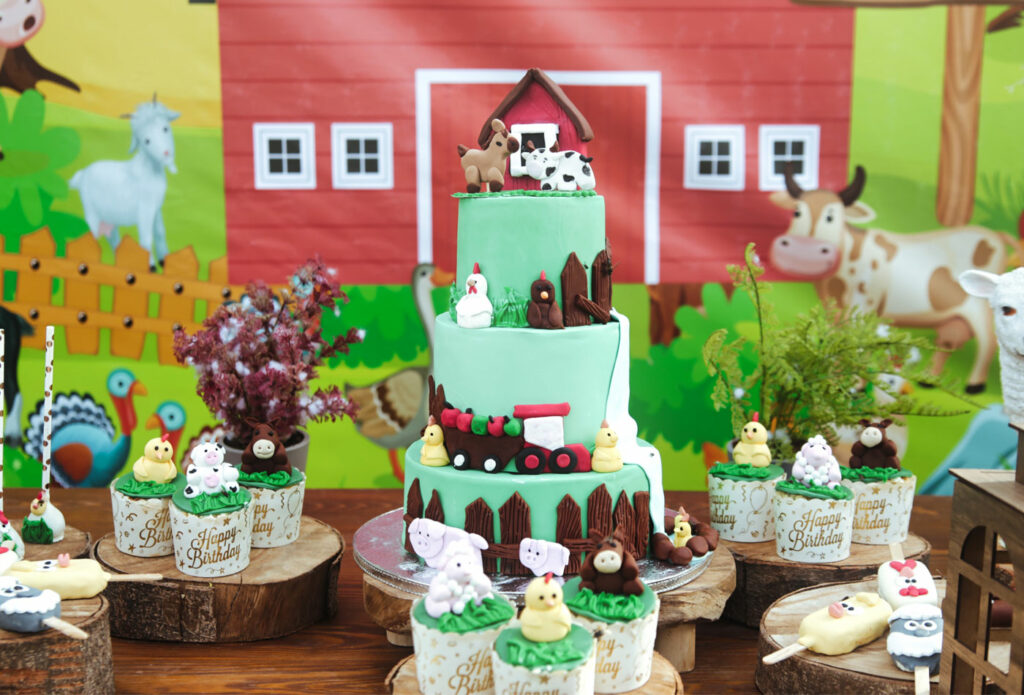
The importance of insurance
We’ve mentioned it briefly throughout our guide, but it’s often something that gets overlooked when it comes to planning a children’s party. Here are a few quick details about what you need to consider.
What type of cover do I need?
Any damage to your property as a result of a party may well be covered in your home and contents insurance. But as always, check the small print to see if your legal fees are covered and if there is a limit. Also, bear in mind that if a child falls ill, is injured or has an allergic reaction to food served at the party, the parents may sue. If their car is damaged while parked on your property, they may also put in a claim against you. If this is really worrying you, it may be worth adding some personal liability insurance to your portfolio.
Do I need extra insurance when I’m hosting a party at home?
Again, not necessarily if you have opted to include accidental damage cover in your home and contents insurance.
What kind of insurance should outside providers have?
If you’re using outside caterers, entertainers or activities organisers such as a bouncy castle, the providers should have public liability insurance, cancellation insurance, employer’s liability insurance (unless they’re a one-person operation), and equipment damage cover.
What if I hire a venue?
An event at a location away from your property may not be covered by your house and contents insurance. You’ll also need to check if the venue has full public liability insurance to protect them against any claims or costs resulting from injury or damage to property. For your own peace of mind, taking out personal liability insurance would be advisable to protect you in the event of a child tripping over a strip of bunting or getting sick from any food you serve.
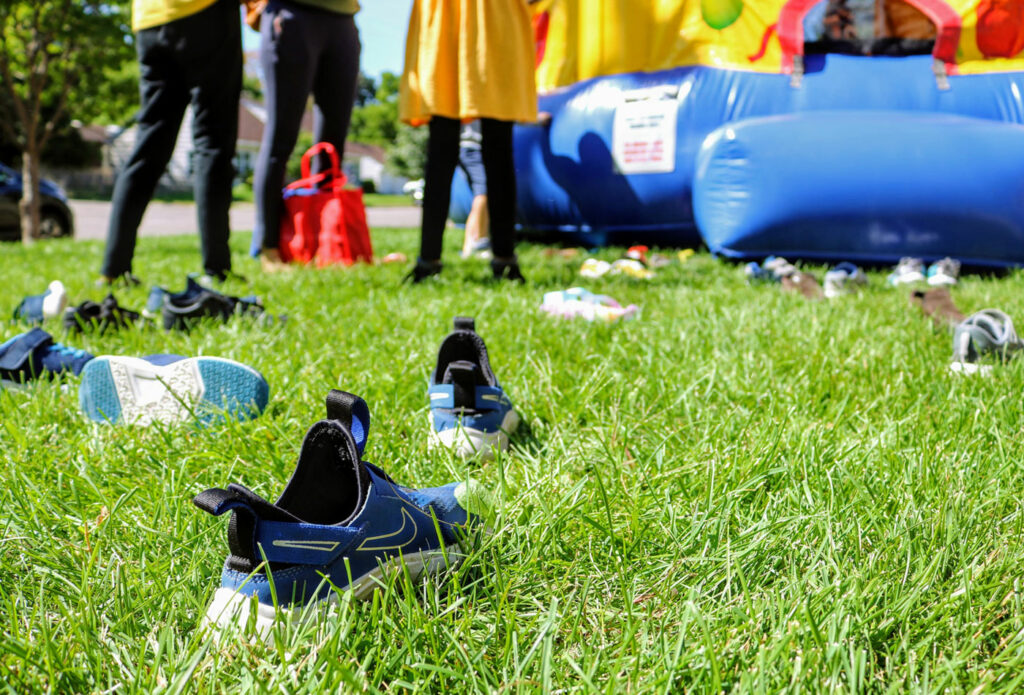
FAQs
What details should I include on the invitations?
Your invites should include the date, start and end times, location (including the postcode for parents who may need to tap it into their satnav) and your phone number and email address. Make sure you include the theme (if there is one) and a date by which an RSVP should be returned.
How long should a children’s birthday party last?
Around two hours is ideal for a birthday party for children of any age. If your party is for toddlers, try setting aside a quiet area for naps if any little ones get sleepy.
Should I have my pets in the house?
A house full of excited children can be incredibly stressful for pets. If you’re planning a kid’s party at your house, ask if a friend or neighbour can look after your pets for the duration of the party in exchange for a slice of birthday cake!
What should I do if a child feels unwell or wants to go home?
If the parents aren’t there, make sure you have their contact details so you can contact them straight away. If it’s a medical emergency, contact 111 or 999.
What if a child has an ‘accident’?
Very young children can easily get over-excited and have a toilet accident. A good tip is to have a pack of cheap children’s pants so the parents can change them without the child having to leave the party.
Can I serve alcohol to the adults at a children’s party?
If you’re planning a children’s party at home, that is entirely your choice. If the party is at a venue, you will need to check to see if it has an alcohol licence. The best thing to do is to avoid the issue and serve tea, coffee and soft drinks instead.
